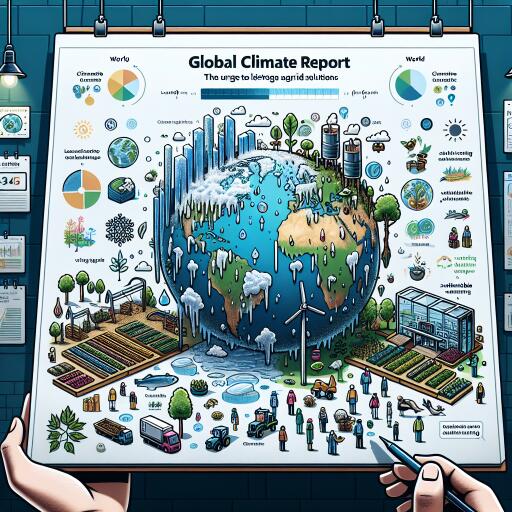
Transforming Agrifood Systems: A Vital Step Towards Climate Resilience
With climate change casting long shadows over global agricultural landscapes, calls for a radical transformation in agrifood systems have intensified. The dramatic alterations in weather patterns are not just environmental concerns; they increasingly threaten food security, agricultural productivity, and socioeconomic stability worldwide.
The dire need to adapt and fortify our agrifood systems against climate change finds its roots in the recent findings of the annual global climate summary. This comprehensive report, led by a collaboration of various United Nations agencies, including the significant participation of the Food and Agriculture Organization (FAO), has unveiled worrying trends for 2023. Key climate indicators such as surface temperatures and greenhouse gas concentrations have hit new highs, underscoring an escalation in climate-related adversities. From unparalleled heatwaves and devastating floods to the destructive fury of wildfires and cyclones, the toll on human livelihoods, particularly within the agriculture sector, is staggering.
The extensive economic losses, coupled with the distressing rise in food insecurity and the displacement of populations, highlight the urgent need for a robust response. The poignant increase in acute food insecurity instances, doubling since the pre-pandemic era, paints a stark picture of the situation at hand. Various regions across the globe, from southern Africa’s flood-ravaged farmlands to South Sudan’s flooded communities and Indonesia’s drought-stricken rice fields, serve as testimonials to climate change’s devastating impact on agriculture.
Amid these tumultuous times, the agricultural sector’s vulnerability, particularly to droughts, has been spotlighted as a leading cause of damage and loss. This situation not only calls for immediate global attention but also demands a concerted effort to mitigate climate risks and bolster resilience in vulnerable communities around the world.
In response to these challenges, FAO has been at the forefront of driving initiatives to fortify agrifood systems against climate adversities. Grounded in the FAO Strategy on Climate Change, the organization’s action plan spans across multiple sectors like crop and livestock production, fisheries, and aquaculture, integrating climate resilience throughout. This strategy emphasizes the importance of diverse actors, including women, youth, and Indigenous Peoples, in spearheading climate action.
Moreover, the FAO’s alignment with international climate commitments and its role as a key partner in delivering on the objectives of the Green Climate Fund (GCF) and the Global Environment Facility (GEF) underscore the collaborative effort to secure a sustainable food future. With projects surpassing 1 billion in investments, these initiatives aim at making agrifood systems more efficient, inclusive, sustainable, and resilient to climate change.
Noteworthy too are FAO’s tailored projects like SAGA and SCALA, focusing on regions vulnerable to climate impacts, employing early warning systems and anticipatory actions to combat imminent threats. This integrated approach not only seeks to advance sustainable development goals (SDGs) but also bridge efforts across biodiversity, environmental preservation, and food security within the agrifood context.
The recent outcomes from global summits, including the Kunming-Montreal Global Biodiversity Framework and the UNFCCC COP28, have recognized the critical role of agriculture and food systems in the broader climate action and biodiversity conservation narratives. This acknowledgment paves the way for a cohesive approach towards tackling the intertwined challenges of climate change, environmental degradation, and food insecurity.
In conclusion, the transformation of agrifood systems stands out as a pivotal solution in our quest for resilience against climate change. This endeavor, requiring an all-hands-on-deck approach, is both a challenge and an opportunity to safeguard our common future, ensuring food security, biodiversity, and climate objectives are met in harmony. As we navigate these turbulent times, the urgency to act is clearer than ever, compelling us to champion agrifood solutions as the linchpin in our global response to climate change.





Leave a Reply